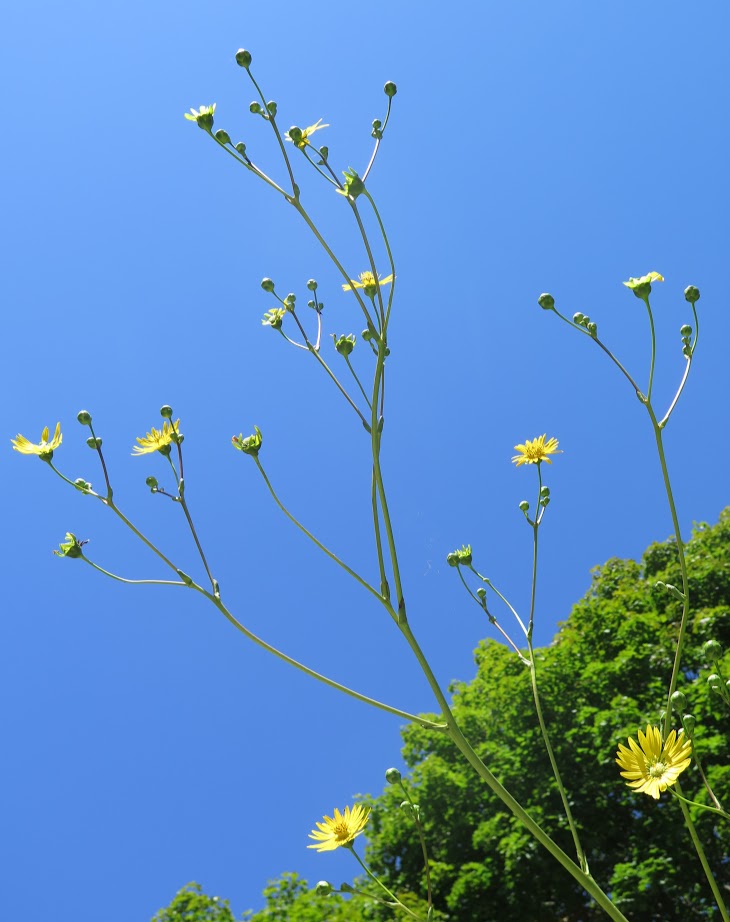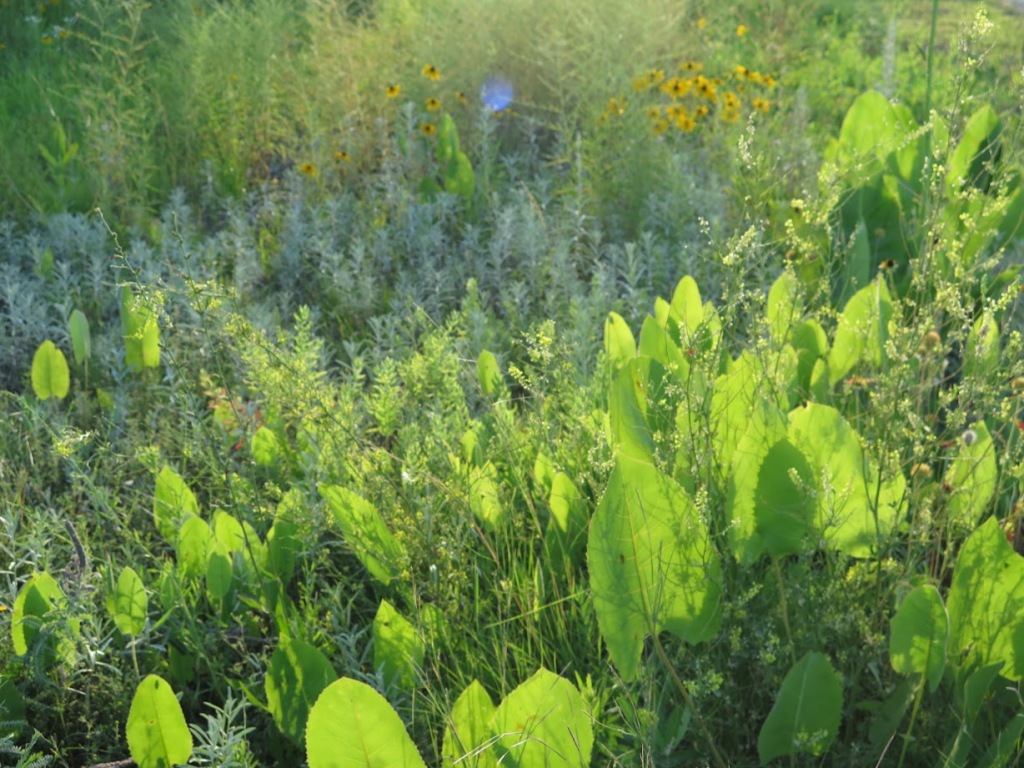Prairie dock! Silphium terebinthinaceum (what a word)! When I first saw a picture of prairie dock, I thought, “WHAT?! How have I never seen this plant?!” I was about to bust right open, sitting on my couch, looking at my plant catalog. “Where has this plant been all my life?!” I shouted internally.

Appreciation of Life’s More Spectacular Foliage
Prairie dock has enormous leaves, as rough as sandpaper, with beautifully scalloped edges. The biggest leaf in the garden this year is 17 inches across and 28 inches long! These are the sort of leaves that inspire a gardener to measure leaves. When the sun shines through and other flowers become silhouettes, it can stop time; stop a cricket mid-chirp; the toad holds his breath; the gardener stands still. Prairie dock leaves can do that.

The roughness of the leaves makes them deer and rabbit resistant, and the deep reaching taproot (up to14 ft) makes prairie dock resistant to drought, and to being moved. It sounds like it will just keep coming back (for a long time!), so make sure to plant it where you want it.
Prairie dock is a close relative to compass plant Silphium laciniatum, who has been shown to live to one hundred years, and some suspect that prairie dock is equally long-lived. Before I knew this, I planted about ten plants at our town pump station -and they look great there- but it’s a little funny to think they could be there for the next 100 years, and I hope they are! (Really, I can’t think of anyone in 2115 who wouldn’t want prairie dock there.)

Towering Flowers
In the garden, the first striking feature are the leaves, which reach almost full size by early summer, but in August a tall flower stalk shoots up. This year our tallest prairie dock is 12 feet tall! It’s the tallest plant in our garden, beating out the 9 foot pale Indian plantain (Arnoglossum atriplifolium), and tall coreopsis (Coreopsis tripteris) at 10 feet.
Prairie Dock’s Pollinators
A few years in, and there are many flowers and flower buds. They’re beautiful and very attractive to all sorts of pollinators: bumblebees, small solitary bees, halictine bees (green bees, sweat bees), bee flies, monarchs, and even hummingbirds all like to visit.

Since I was planting prairie dock at the town pump station (sort of a public place), I was a little more curious than usual how long it might take prairie dock to bloom. I asked the seed company, and was told 7 years! Now, it might be a function of the regular drought stress in Iowa, but one plant at the pump station (it was the worst drought in decades) bloomed it’s second year, and most of my plants have bloomed by their third summer.
They can handle medium wet to medium dry, as well as periods of drought. But if you live in a place with medium-wet conditions, I don’t know, they might just live the good life and take a little longer to bloom. But the leaves alone are reason enough to have prairie dock in the garden.
As a host plant, Prairie dock sticks to lesser known guests, who specialize on prairie dock and compass plants. It’s home to the silphium beetle (larva and adults), as well as two gall wasp species, who form galls inside the flower stalks. As well as a little specialist aphid, Iowana frisoni.
Do you have any prairie dock in your yard? If you do, how old is it? How long did it take to bloom?
Resources
Iowana frisoni Hottes (Hemiptera: Aphididae) redescribed, with notes on its biology. Favret C., Tooker J.F., Hanks L.M. (2004). Proceedings of the Entomological Society of Washington, 106 (1) , pp. 26-34.
Prairie Dock, Illinois Wildflowers
Prairie Dock (Silphium terebinthinaceum), By Christopher David Benda, U.S. Forest Service
Silphium Terebinthinaceum, Prairie Dock, Prairie Moon Nursery

4 replies on “Prairie Dock Forever”
this plant is beautiful! do you think it would grow in Southern Calif?
LikeLike
Hey Carrie!! So I looked it up and they say it range is zones 4-7… and your zone looks to be more like 9-11… so I think it might not do very well, unfortunately. But when I was looking around I saw this cool California native seed company http://www.larnerseeds.com/store/term/perennial-wildflowers
Maybe they have something similar? Though hard to compare to prairie dock, I know. 🙂
LikeLike
[…] ludoviciana) is a rhizomatous species. Both volunteered to help fill this garden spot under the Prairie Dock (Silphium terebinthinaceum) […]
LikeLike
[…] flowers, leaves so ugly they’re pretty. I thought about writing an ode to the plant but someone else already did the job nicely. My two Prairie Docks came back this spring and there’s a new one that might survive to join […]
LikeLike